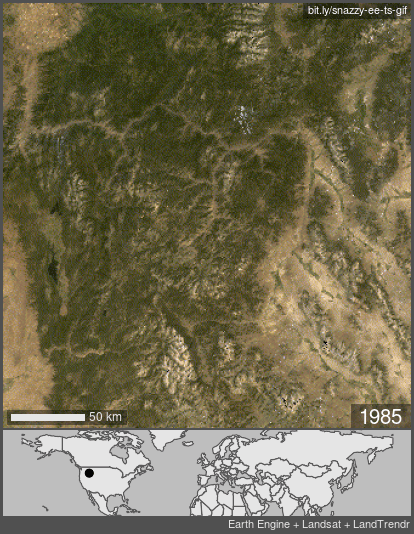forum
library
tutorial
contact

More on the Lower
Snake River Dams Story
by Gregg Servheen
Capital Press, June 3, 2023
|
the film forum library tutorial contact |

|
More on the Lower
by Gregg Servheen
|
 The Capital Press recently published an article written by Matthew Weaver entitled "Amid a battle over Snake River dams, a look at how salmon are doing."
The Capital Press recently published an article written by Matthew Weaver entitled "Amid a battle over Snake River dams, a look at how salmon are doing."
But it was not a report on how salmon are doing based on the abundant scientific evidence and the conclusions of professional fisheries biologists, managers and scientists.
Rather, it was a misleading article based on the opinions of two federal government talking heads implying that the very ecological complexity of salmon life history was itself the problem in the decline and survival of salmon rather than the mortalities caused by the Snake River dams on adult and juvenile salmon.
What every Capital Press reader needs to know is that Idaho's salmon are a part of many highly complex ecosystems.
From the clear water in Idaho that gives them life and calls them back home, to the rivers that connect them to the ocean and back, to the Pacific Ocean, the largest water body on earth. These ecosystems and the fish have evolved together over millions of years. In those millions of years, the fish and ecosystems that give each other life have also tested each other as only time can test. They have seen every natural extreme that millions of years can bring. They have lived and died, struggled and survived, as extremes and changes have occurred in their watersheds, rivers, and oceans.
Through it all, they have evolved and thrived. So much so that descriptions of their plenitude in the oceans, rivers, and creeks defied our language to describe. That abundance and profusion gave life to indigenous human cultures and civilizations. It gave life to thousands of wildlife and plant species. Millions of years of coevolution have helped salmon create mass migration, the miracle of adapting to both salt and fresh water, and the social, intelligent, predatory, sea going mammals we call orcas.
This evolution, these ecosystems, and salmon's continuing abundance and ability to thrive is under threat of extinction only because of the last 150 years of human development.
To be clear, salmon and their ecosystems were thriving prior to this and development of the Columbia River hydro system.
To be clear, science confirms that Idaho's formerly abundant salmon and steelhead precipitously declined and are threatened with extinction after the Snake River was dammed.
To be clear, science directed and monitored billions spent on habitat restoration and mitigation, including "as good as it gets" fish ladders around the dams, salmon "predator" management, and ocean conditions.
To be clear, it is misleading to claim high out migrant survival rates at each dam are "on track" when the most reliable metric, smolt to adult return ratios, are declining and anything but "on track."
To be clear, science has now determined that Idaho's listed fish stocks will continue to decline and will go extinct in the next few decades no matter other efforts, unless the Snake River is restored by removing the lower four dams.
Removing the dams is the single most effective action we can take to recover these fish. That is what the science tells us. This is what NOAA and USFWS scientists concluded in their 2022 "Rebuilding" report, which unequivocally states: "For Snake River stocks, the centerpiece action is restoring the lower Snake River via dam breaching." (page 17).
In the article, Graves poses the question "Does more need to be done?" as the "conversation" that needs to occur. No matter that decades of restoration and scientific research investments and NOAA have already given us the answer.
Decades of science have illuminated the path to fish recovery. We need to accept the science, act now, and recover the Snake River. Restoring the river and these iconic fish will also rebuild the health and longevity of communities of people and ecosystems dependent on Idaho rivers and watersheds.
Restoring these fish would help restore orca populations in the oceans.
If we were smokers, would quitting the habit to restore our health be the best thing we could do? Yes. So it is with Idaho's salmon and the addiction that the lower Snake River dams represent.
The time for effective action is upon us. Delay will only drive the fish further toward extinction. Restoring the Snake River by removing the lower four dams is the single most important action we can take for Idaho, for Idaho's salmon and steelhead, for Idahoans, and for all human and non-human communities and ecosystems in these watersheds, rivers and oceans.
Related Pages:
For a Better Future, the Four Lower Snake River Dams Must Go by Gregg Servheen, Bend Bulletin, 2/21/23
Removing Lower Snake River Dams the Only Way to Save Salmon by Gregg Servheen, Spokesman-Review, 2/18/23
We Can Do this for Fish and Ourselves by Gregg Servheen, Post Register, 2/15/23
learn more on topics covered in the film
see the video
read the script
learn the songs
discussion forum
